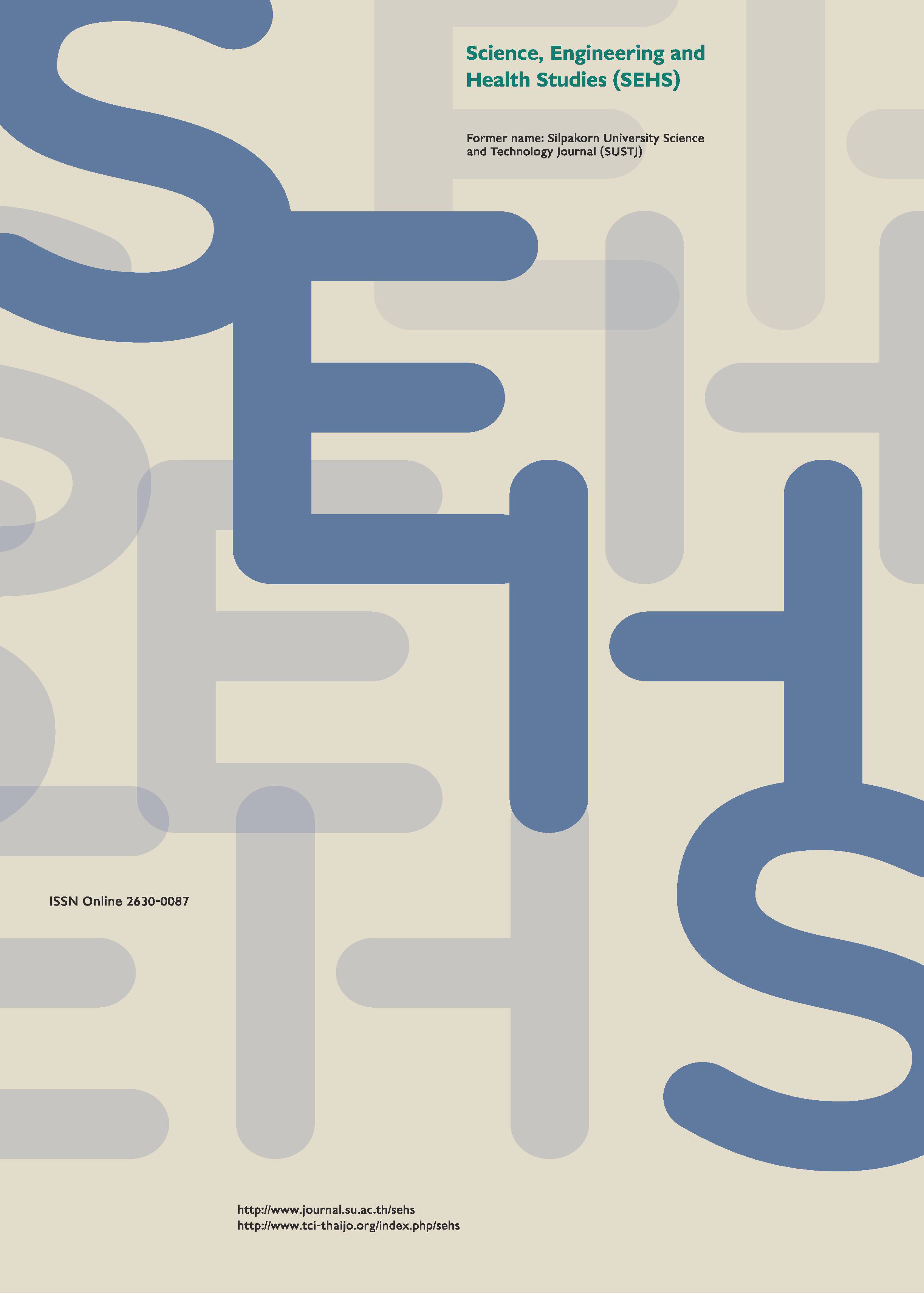Comparative study of product contamination rates in class II biological safety cabinets with and without ultraviolet light disinfection
Main Article Content
Abstract
Class II biological safety cabinets (BSCs) are equipment necessary in microbiological laboratories to protect workers from laboratory-acquired infections. The recommendation has dismissed the use of ultraviolet (UV) light in BSCs. Nevertheless, >80% of class II type A2 BSCs manufactured in the U.S. in the past decade were installed with UV light. This study aimed to determine the contamination rates of products in BSC working surfaces disinfected with UV light irradiation for 15 min and subsequently with 70% ethanol, and compared with those disinfected using only 70% ethanol. Results showed that the numbers of contaminated plates with bacterial and fungal colonies after disinfection with 70% ethanol alone were not significantly different from those after disinfection with UV light plus 70% ethanol. No significant difference in the numbers of contaminated plates was observed between BSCs in air-conditioned and window-ventilated rooms. Finally, the benefits and limitations of using a UV light system for the disinfection of working surfaces in class II BSCs were discussed.
Downloads
Article Details

This work is licensed under a Creative Commons Attribution-NonCommercial-NoDerivatives 4.0 International License.
References
Burgener, J. (2006). Position paper on the use of ultraviolet lights in biological safety cabinets. Applied Biosafety, 11(4), 228-230.
Centers for Disease Control and Prevention and National Institutes of Health. (2020). Biosafety in microbiological and biomedical laboratories. In U.S. Department of Health and Human Services Centers for Disease Control and Prevention National Institutes of Health (Meechan, P. J. and Potts, J., eds.), 6th ed., p. 413. [Online URL: https://www.cdc.gov/labs/pdf/SF__19_308133-A_BMBL6_00-BOOK-WEB-final-3.pdf] accessed on August 10, 2021.
Gilpin, R. W., and Powitz, R. W. (2020). NSF international NSF 49-2019 informative Annex 1 (formerly Annex E) biosafety cabinet selection, installation, use, lifespan, and decommissioning. NSF/ANSI 49-2019. [Online URL: https://www.researchgate.net/publication/340446683_NSF_International_NSF_49-2019_Informative_Annex_1_formerly_Annex_E_Biosafety_cabinet_selection_installation_use_lifespan_and_decommissioning] accessed on November 22, 2021.
Harrington, B. J., and Valigosky, M. (2007). Monitoring ultraviolet lamps in biological safety cabinets with cultures of standard bacterial strains on TSA blood agar. Laboratory Medicine, 38(3), 165-168.
Kayani, B., Weaver, D. T., Gopalakrishnan, V., King, E. S., Dolson, E., Krishnan, N., Pelesko, J., Scott, M. J., Hitomi, M., Cadnum, J. L., Li, D. F., Donskey, C. J., Scott, J. G., and Charnas, I. (2021). UV-C tower for point-of-care decontamination of filtering facepiece respirators. American Journal of Infection Control, 49(4), 424-429.
Kitagawa, H., Nomura, T., Nazmul, T., Omori, K., Shigemoto, N., Sakaguchi, T., and Ohge, H. (2021). Effectiveness of 222-nm ultraviolet light on disinfecting SARS-CoV-2 surface contamination. American Journal of Infection Control, 49(3), 299-301.
Kruse, R. H., Puckett, W. H., and Richardson, J. H. (1991). Biological safety cabinetry. Clinical Microbiology Reviews, 4(2), 207-241.
Marra, A. R., Schweizer M. L., Edmond, M. B. (2018). No-touch disinfection methods to decrease multidrug-
resistant organism infections: a systematic review and meta-analysis. Infection Control & Hospital Epidemiology, 39(1), 20-31.
Meechan, P. J., and Wilson, C. (2006). Use of ultraviolet lights in biological safety cabinets: A contrarian view. Applied Biosafety, 11(4), 222-227.
NuAire. (2016). Benefits and risks of ultraviolet (UV) light. NuAire, Inc. [Online URL: https://www.nuaire.com/resources/benefits-and-risks-of-uv-light-white-paper] accessed on August 10, 2021.
Richmond, J. Y., and McKinney, R. W. (2000). Primary Containment for Biohazards: Selection, Installation and Use of Biological Safety Cabinets, 2nd, Maryland: National Institutes of Health, p. 27.
Turnbull, P. C. B., Reyes, A. E., Chute, M. D., and Mateczun, A. J. (2008). Effectiveness of UV exposure of items contaminated with anthrax spores in a class 2 biosafety cabinet and a biosafety level 3 laboratory pass-box. Applied Biosafety, 13(3), 164-168.
Weaver, D. T., McElvany, B. D., Gopalakrishnan, V., Card, K. J., Crozier, D., Dhawan, A., Dinh, M. N., Dolson, E., Farrokhian, N., Hitomi, M., Ho, M., Jagdish, T., King, E. S., Cadnum, J. L., Donskey, C. J., Krishnan, N., Kuzmin, G., Li, J., Maltas, J., Mo, J., Pelesko, J., Scarborough, J. A., Sedor, G., Tian, E., An, G. C., Diehl, S. A., and Scott, J. G. (2021). UV decontamination of personal protective equipment with idle laboratory biosafety cabinet during the COVID-19 pandemic. PLoS ONE, 16(7), e0241734.


